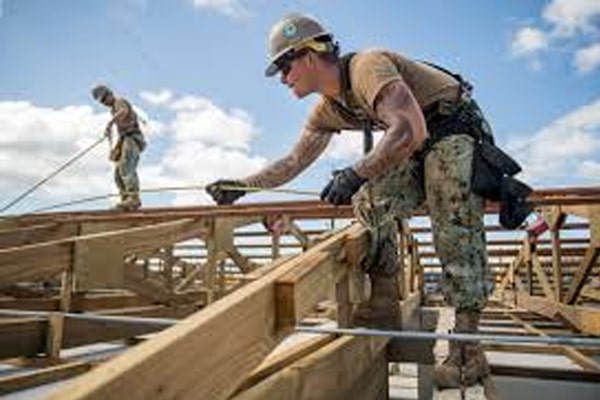The Art of Retrofitting: Upgrading Older Buildings for Modern Needs
Moving into the future, the demand for space and infrastructure continually evolves. Many older buildings that once served their original purposes find themselves in need of a transformation. This is where the art of retrofitting comes into play, breathing new life into aging structures and adapting them to meet modern needs. This article will explore the fascinating process of retrofitting older buildings for new purposes and how the addition of steel purlins plays a pivotal role in reinforcing the structure and accommodating changes in use.
The Evolution of Retrofitting
Retrofitting, in essence, is a creative and practical endeavor that involves reimagining and refurbishing older buildings to align with contemporary requirements. It is not just about aesthetics but also ensuring safety, functionality, and energy efficiency. These projects present unique challenges, but they also offer an opportunity to preserve historical and architectural heritage while meeting the demands of the present and future.
Understanding the Retrofitting Process
The retrofitting process typically involves a series of well-thought-out steps. Here’s a concise overview:
Assessment: The first step is to assess the existing structure thoroughly. This includes examining the building’s foundation, walls, roof, and other critical components to identify weaknesses or areas in need of improvement.
Planning: Once the assessment is complete, a detailed plan is developed. This plan outlines the modifications and enhancements needed to transform the building. It takes into account the building’s historical significance, intended use, and compliance with modern building codes.
Adapting for Modern Use: The retrofitting process also involves redesigning the interior spaces to suit the building’s new purpose. This may include adding or removing partitions, updating electrical and plumbing systems, and integrating modern amenities.
Energy Efficiency: Sustainability is a key consideration in retrofitting projects. Upgrading insulation, windows, and HVAC systems can significantly improve energy efficiency, reducing operational costs and environmental impact.
Preserving Historical Features: While modernizing the building, it’s essential to preserve its historical features and architectural charm. This can involve careful restoration of facades, ornamental details, and other elements that contribute to the building’s character.
Compliance and Permits: Retrofitting projects must adhere to local building codes and regulations. Securing the necessary permits and approvals is a crucial step in the process.
YOU MAY LIKE- 20 Things of Bali You Must Know – A Complete Tourist Guide 2018
The Role of Steel Purlins in Retrofitting
Steel purlins are the unsung heroes of retrofitting projects. These lightweight, durable, and versatile components play a vital role in reinforcing the structure of older buildings. Here’s how they contribute to the success of retrofitting endeavors:
Structural Integrity: They are installed horizontally across the roof and walls, providing additional support. They distribute the load evenly, reducing stress on the existing structure. This reinforcement is essential when repurposing a building for new uses that may require different load-bearing capabilities.
Flexibility in Design: They also offer flexibility in designing the interior layout. Since they span long distances without the need for many vertical supports, they allow for open floor plans and creative use of space.
Weather Resistance: Steel is highly resistant to weathering, rust, and corrosion. This durability ensures the longevity of the retrofit and minimizes maintenance costs over time.
Cost-Effective: Retrofitting can be a cost-effective solution compared to traditional construction methods. The ease of installation and the ability to work with existing structures often result in savings.
Sustainability: Steel is a recyclable material, making it an eco-friendly choice for retrofitting projects. Using steel aligns with sustainability goals and reduces the environmental footprint of the renovation.
Conclusion
Retrofitting older buildings for modern needs is an art that combines creativity, engineering expertise, and a deep appreciation for history. It allows people to breathe new life into structures that might otherwise be lost to time while meeting the demands of this evolving world. As people continue to reimagine and repurpose the built environment, the art of retrofitting will play an increasingly vital role in shaping cities and communities for generations to come.
We have successfully published thousands of articles that may be beneficial for you to read. You can visit them anytime.
Don’t miss out on Following SuperbHub for more updates on celebrity entertainment, biography, articles, Health, and news.
Recent News
-

Duane Chapman Is Now Engaged To Girlfriend Francie Frane, Had Lost Wife 10 Months Earlier
-

Katherine Schwarzenegger Pregnant With Her First Child With Husband Chris Pratt
-

Chris Cuomo's Son Mario Tested Postive For Coronavirus
-

Kodak Black And NBA YoungBoy, Dissing One Another Via Social Media
-

Maeve Kennedy McKean, Robert F. Kennedy's Granddaughter, is Missing Along With Her Son
Entertainment
-

The Evolution of Entertainment: Online Casting Calls Redefining the Industry
-

Mamoudou Athie's Must-Watch Performances in the Movies and TV Series
-

Try These Unique Forms of Entertainment When You've Exhausted All Options
-

7 Best Movies on Netflix This Week
-

Campus Grooves: Exploring Music Festivals in American Colleges





